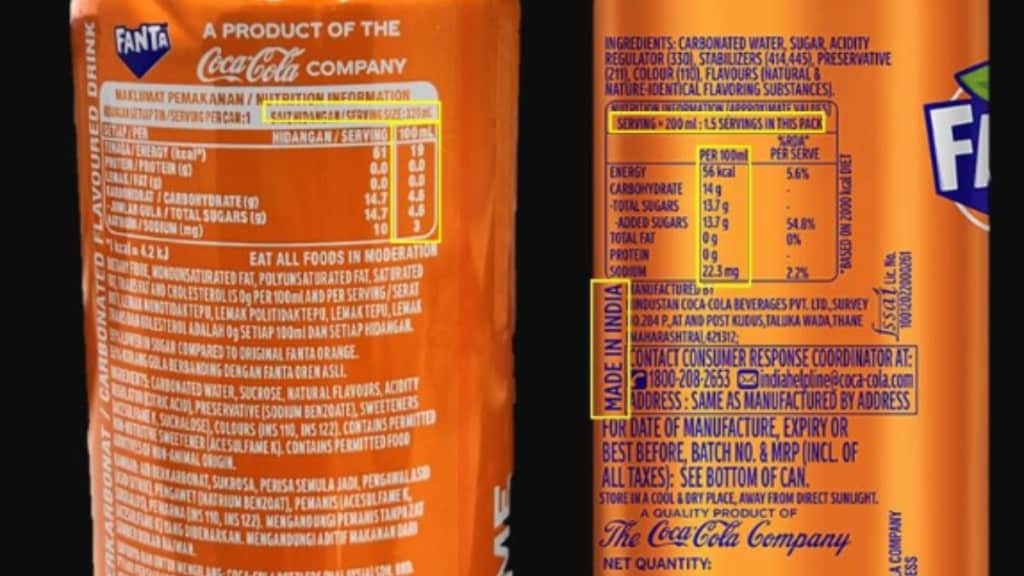A LinkedIn user recently shared an eye-opening experience about significant differences in the nutritional content of Fanta sold in India compared to its Malaysian counterpart. While shopping for groceries, the user purchased an imported Fanta can, only to later realize it was priced at Rs 140—much higher than the usual Rs 40 for an India-made version. However, the real surprise came upon checking the nutritional labels.
The Malaysian edition of Fanta contains just 4.6g of sugar per 100ml, while the Indian version has a staggering 13.6g per 100ml—almost three times more. Similarly, sodium content in the Indian edition is 22.3mg per 100ml, compared to just 3mg in the Malaysian version, a sevenfold increase. Another key observation was the way serving sizes were labeled. While the Malaysian edition clearly marks 320ml as a single serving, the Indian version lists 200ml as a serving size despite being sold in a 300ml can, potentially misleading consumers about their actual intake.
This revelation has sparked concerns about product localization versus market-driven optimization. While companies often adjust formulations based on regulations, pricing, and local tastes, the stark differences in sugar and sodium content raise questions about whether these tweaks are prioritizing cost savings over consumer health.
Health-conscious voices, including Revant Himatsingka (Food Pharmer), have been advocating for more transparency in food labeling and questioning why such variations exist. The LinkedIn user further urged The Coca-Cola Company to clarify whether these differences are cost-driven, regulatory-influenced, or a strategic decision based on market preferences.
With growing awareness about sugar intake, obesity, and lifestyle diseases, this incident has reignited the debate on whether global beverage brands are truly optimizing products for consumers—or merely exploiting regulatory loopholes in different markets.


